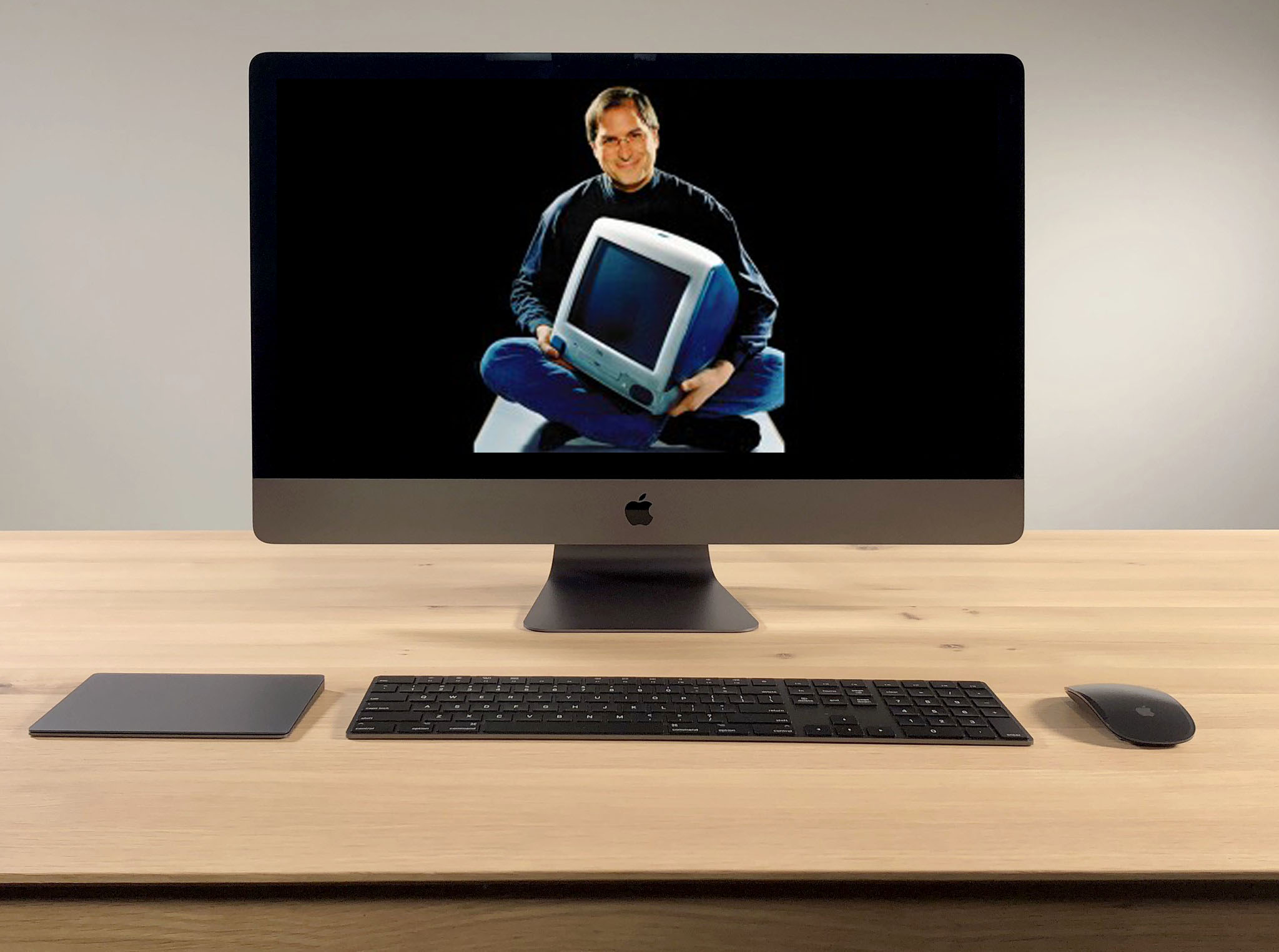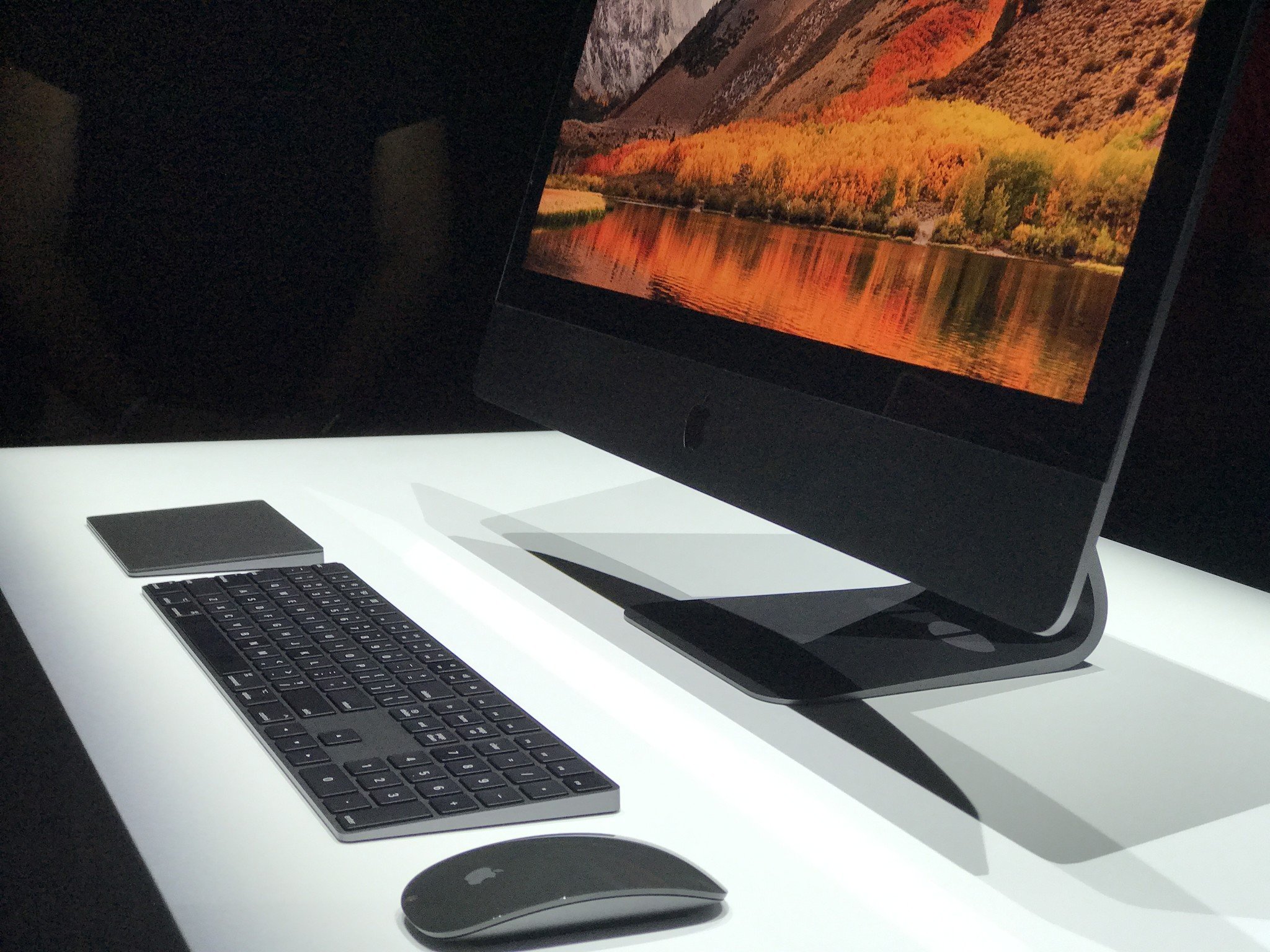iMac at 20: How the all-new all-in-one ignited the modern Apple

iMac. The "I" stood for internet, as well as individual, instructive, informational, and inspiring. Now, it might as well stand for iconic. No Mac — no computer — has been as instantly recognizable for as long as iMac. Announced on May 6, 1998, it shipped on August 15, 1998, and it set Apple up for the next 20 years.
It began with Steve Jobs and Jony Ive, a creative collaboration that became one of the most successful in history, and that led to iPod, iPhone, and iPad, and everything that came in between.
Apple made iMac but, in turn, iMac made Apple.
Apple had been down. Apple had been almost out. Then, Apple bought NeXT and not only got the operating system that would become OS X (now macOS), but got it's co-founder back, Steve Jobs.
Step by thoughtfully quadrant'ed step, Jobs sought to distill Apple's products into consumer and professional, laptop and desktop. iMac was to fill the consumer desktop slot… but also to shake up the consumer desktop space.
Instead of being a beige box, it was bright, translucent cybernetic gumdrop in Bondi Blue. (And, eventually, Blueberry, Grape, Tangerine, Lime, Strawberry, Graphite, Ruby, Sage, Indigo, Snow — and, wait for it — Blue Dalmatian and Flower Power.)
It also had no floppy drives and no legacy ports. Those gave way to a CD-ROM drive and USB. And, famously, all you had to do was plug it into power and the internet, and you were good to go.
Master your iPhone in minutes
iMore offers spot-on advice and guidance from our team of experts, with decades of Apple device experience to lean on. Learn more with iMore!
From Apple (via Archive.org:
In a major move in to the consumer market, Apple Computer, Inc. today unveiled iMac--the "Internet-age computer for the rest of us." iMac features a striking design, easy Internet access and Pentium-toasting PowerPC G3 performance for $1299."We designed iMac to deliver the things consumers care about most--the excitement of the Internet and the simplicity of the Mac," said Steve Jobs, Apple's Interim CEO. "iMac is next year's computer for $1299; not last year's computer for $999." "Today we brought romance and innovation back into the industry," added Jobs. "iMac reminds everyone of what Apple stands for."
Thanks, Walt. Hanging out w Steve J for a few days while he prepared for launch was an amazing experience. And a quote from that story wound up in the Sorkin movie! https://twitter.com/waltmossberg/status/993146170565386240Thanks, Walt. Hanging out w Steve J for a few days while he prepared for launch was an amazing experience. And a quote from that story wound up in the Sorkin movie! https://twitter.com/waltmossberg/status/993146170565386240— Steven Levy (@StevenLevy) May 6, 2018May 6, 2018
At launch, Walt Mossberg wrote for The Wall Street Journal;
These words are being created on the coolest-looking desktop personal computer I've ever used. It's a handsome two-tone devil, sort of blue-green and off-white, tapered at the rear, with a crisp, built-in 15-inch monitor and internal stereo speakers. It takes up very little space and looks like part of the decor in your home, not an invader from some techie's workshop.
Andrew Gore and Anita Epler wrote for Macworld:
It's hard not to recognize the iMac's lineage: the all-in-one case, the tiny footprint, even the integrated handle—all suggest the original Macintosh. But this is where the similarities end. Using translucent plastics of "ice" and "Bondi blue" (in homage to the Australian beach), Apple's industrial-design group created a computer without a single straight line—even the keyboard components are curved. The case allows through just enough light to suggest the outlines of the iMac's internal works without revealing too much.
iMac wasn't just colorful. It wasn't just successful. iMac was the turning point from the Apple that was towards the Apple that was going to be.
Everything Steve Jobs, Jony Ive, and the hardware engineering, operations and other teams knew in their guts and came to learn throughout the process, informed what followed with iPod. And, when melded with macOS, flowed on into iPhone and iPad, and into Apple Watch and AirPods and whatever comes next.
If you were one of the millions into build-your-own-PCs, hacking, long support for legacy ports, or a host of other, more traditional computing tropes, iMac symbolized everything wrong with Apple.
If you were one of the billions for whom those traditional computers had always been alienating and off-putting, unapproachable and inaccessible, then it represented everything finally starting to go right.
Ultimately, what Jobs and company came to was a way of making consumer technology holistically integrated and delightfully aesthetic. And resonated to such a profound degree it made computing mainstream. Everything, including the images and ads became part of our collective culture.
Neither iMac nor Apple ever owned the biggest market share. But they owned the mindshare. There wasn't an Apple device on every desk then or every pocket now, but then like now, Apple defined what those devices could and should be.
iMac is what began turning Apple from insolvency to ascendance. 20 years later, iMac has gone Pro and some iMac users have gone iPad. Computers themselves are increasingly leaving the desktop and going into our hands and onto our wrists and beyond. And, over the long arc of history, it's still just the beginning.
Happy 20th anniversary to everyone who made the iMac a reality, and everyone who's ever used an iMac and made it real.
Share your iMac memories with us in the comments below!

Rene Ritchie is one of the most respected Apple analysts in the business, reaching a combined audience of over 40 million readers a month. His YouTube channel, Vector, has over 90 thousand subscribers and 14 million views and his podcasts, including Debug, have been downloaded over 20 million times. He also regularly co-hosts MacBreak Weekly for the TWiT network and co-hosted CES Live! and Talk Mobile. Based in Montreal, Rene is a former director of product marketing, web developer, and graphic designer. He's authored several books and appeared on numerous television and radio segments to discuss Apple and the technology industry. When not working, he likes to cook, grapple, and spend time with his friends and family.

